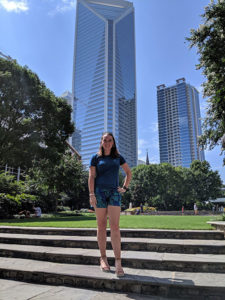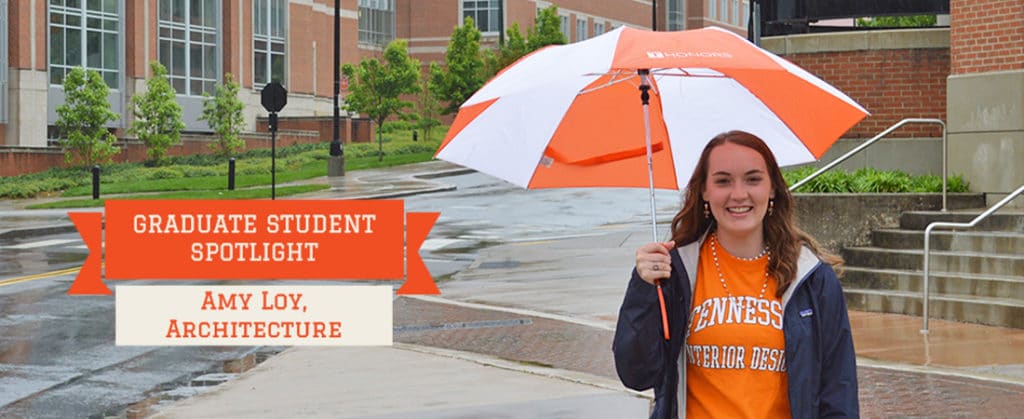The global pandemic has dramatically changed people’s lifestyles across the country. Kitchens and dining rooms became classrooms and offices, vacations were canceled, and friends and family were all banished to a far-off land called Zoom. Faced with the same four walls day after day, existence became increasingly sterile, lacking depth and sensory stimulation.
For many, this resulted in increased malaise, anxiety, and depression. One solution to break the cycle of monotony was to spend time outside. Countless research studies have shown that time in nature is an antidote for stress, from lowering blood pressure and reducing anxiety to improving immune system function and increasing self-esteem.
Amy Loy, a master’s student in the College of Architecture and Design, is examining how human experience is impacted by natural processes and how that informs structure and design. Whether it is how sunlight filters into a space or how water moves and sounds, Loy is looking for ways to design spaces that lead to improved health and wellness.
This approach to architecture and design called biophilic design. Biophilia, which is defined as a relationship with other forms of life, addresses the ways that humans interact with nature. This strategy incorporates water, natural light, green plants, and wood elements into buildings to boost occupant well-being.
Related Article: Professor’s Research Connects People with Nature through Architecture
As an interior architecture student, Loy is interested in how structural design can be informed by prioritizing the human experience.
“This is a relatively novel approach to architecture,” Loy explained. “I want to craft human experience in a space through new ways of thinking and emerging technologies in an effort to design buildings that positively impact the people that use them. As opposed to simply building a box and trying to fit sensory experiences into it.”
As humans, we have an evolutionary history dependent upon our connection to nature and its cycles. Nomadic people traveled with animal migrations, Native Americans rotated between winter and summer homes, and early settlers relied on seasonal changes to dictate farming and harvesting schedules.

Loy, in front of the Duke Energy building in Charlotte, NC
Over the past few decades, however, increased urbanization and advanced technology have driven human beings indoors. Even before the pandemic, people spent an average of 90 percent of their time indoors. That decreased exposure to nature is not without cost, and research shows that a lack of outdoor time can lead to higher rates of emotional and physical illnesses.
“As humans, we have become disconnected from natural cycles,” noted Loy. “Before the invention of air conditioning, people had their windows open and were more attuned to changing temperatures, current weather conditions, and even the length of day. That can create a beautiful experience of being affected by something bigger than you.”
Loy’s interest in biophilic design is the result of a variety of experiences in her past.
“For over 25 years, my dad designed log homes,” Loy remembered. “When I went to work with him, he would let me play with the little design and furniture templates so that I could design my own house. Then in high school, I took an environmental studies class where we learned about green design. Those are probably the main influences that led to my interest in interior architecture.”
Moving forward, Loy believes there is more work to be done when designing to incorporate natural elements.
“Currently, most biophilic design incorporates green plants and water elements, but what does it look like for people that live in mostly snowy or icy landscapes?” Loy mused. “What does room lighting look like for people that experience extensive periods of night and day?”
The ability to design for improved health and happiness is one of the key reasons Loy chose interior architecture. While homes and offices can be pleasant and enjoyable, there is not often much that is compelling about them. Incorporating natural elements that encourage visitor interaction helps create a sense of place that allows people to utilize senses that are often neglected and helps them connect more to the world around them.
